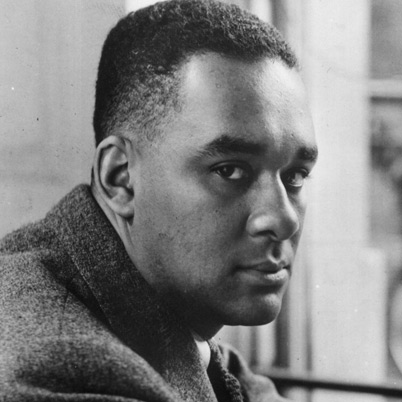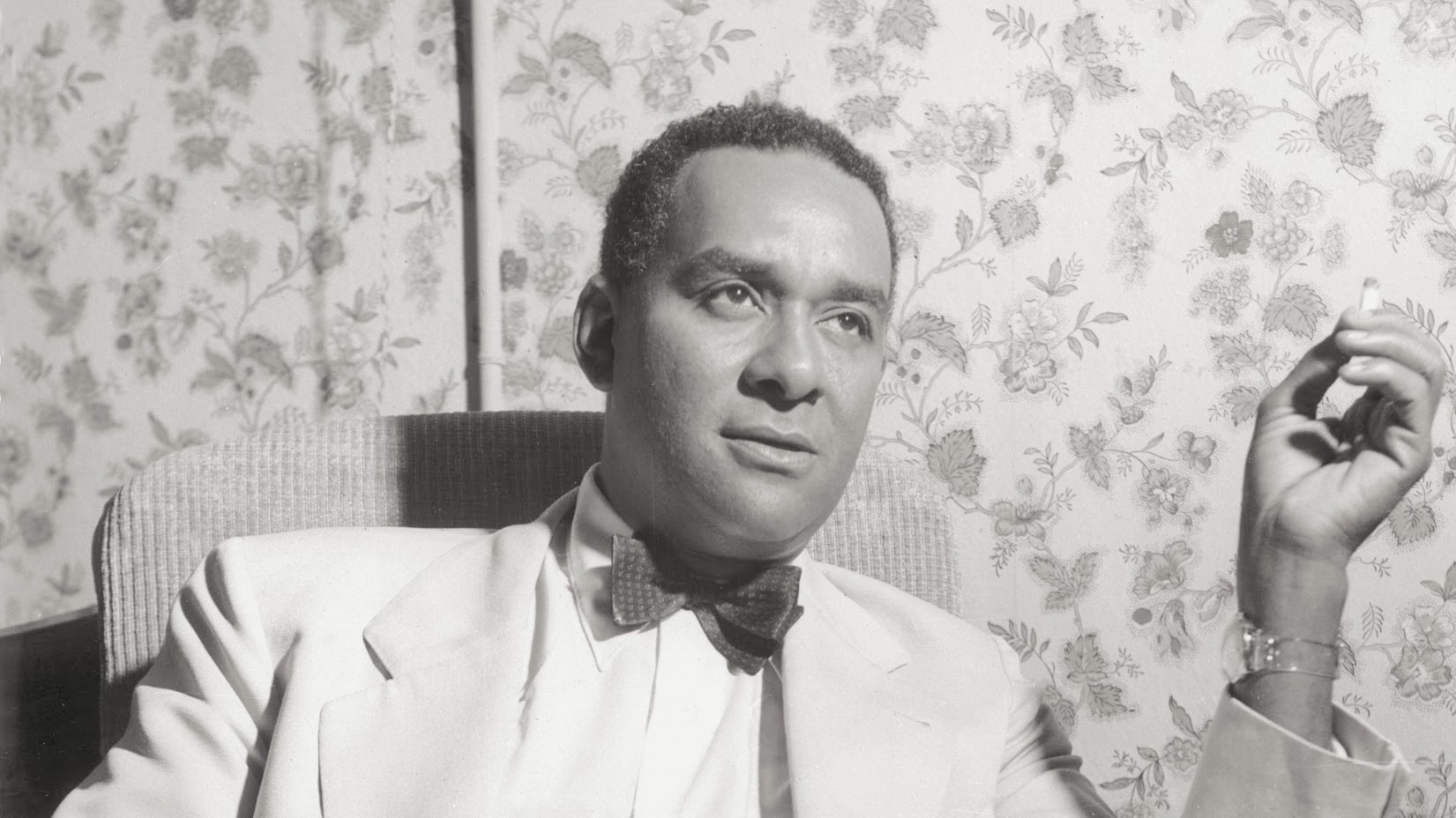 50 Years Later
50 Years Later
“Even today is my complaint rebellious…” Fifty years ago, Richard Wright chose this line from Job, words at once plaintive and defiant, as a telling epigraph to his novel Native Son. The actual novel then begins with the prophetic ringing of an alarm clock–as if Wright wishes to make evident that with this work he is sounding an alarm on many levels.
On the most literal level, the alarm clock is an alarm clock, awakening the tragic, anti-heroic protagonist, Bigger Thomas, to another day of the shame and misery of the rat-infested squalor of the South Side Chicago tenement he shares with his mother and siblings. On a more literary level, the alarm also signals the the birth, the symbolic “awakening” of a consciousness. It marks the beginning of the painful process of self-recognition and self-loathing that will lead Bigger from despair to violence and, ultimately, inevitably, to his death.
The novel itself is meant to sound an alarm. To a society capable of Jim Crow laws, to an elaborate social system that showed itself more adept at creating and then destroying monsters than at preventing their existence.
But in addition to these two levels of meaning, as the author himself will allude to in the introductory piece, “How Bigger was Born,” the novel itself is meant to sound an alarm. To a society capable of Jim Crow laws, to an elaborate social system that showed itself more adept at creating and then destroying monsters than at preventing their existence. To these forces, Wright’s novel is a self-professed note of warning: an apocalyptic prediction of the horror that horror engenders.
Today, fifty years after Harper and Brothers released the novel that was to become a best-seller and Book-of-the-Month Club selection, a number of the issues raised, the objections it drew, and the dark predictions it proffered have a great deal of relevance both in literary and in societal terms.
Native Son is, undeniably, a novel of violence. Its title arises frequently, amid some prestigious company, in discussions concerning school reading lists. Given both the nature and the brutality of certain of its scenes, we are struck by the details of the current controversy over a novel reported in the New York Times.
Recently, the prestigious publishing house of Simon and Schuster, in an apparently unprecedented reversal, decided against publishing a novel entitled American Psycho by Bret Easton Ellis. The publishers cited the novel’s graphic depictions of a serial killer’s mutilations of women as the reason for their decision. Reportedly, prior to this official announcement, two editors assigned to prepare the text, both female, withdrew from the assignment.
At a time when First Amendment rights and artistic freedom seem under assault, knowing where, or if, to draw the line presents a constant dilemma. How would Native Son, with its horrifying portrayal of the smothering and dismemberment of one woman, and the rape and bludgeoning to death of another, have fared, we wonder, if it were being offered for publication in 1990 instead of in 1940. Even for the staunchest opponent of censorship, the passages depicting such wanton violence against women, and especially the descriptions of the “new-born strength” and pride Bigger takes in killing a white woman and his almost off-handed rape and murder of his girlfriend are hard to stomach.
Recent feminist criticism has had little difficulty in convincingly arguing that Wright’s portrayals of women are troubling and problematic, but Wright’s critics are quick to point out that they can question the significance and effects of those portrayals without questioning the author’s right to present them or to occupy a spot on the list of American classics. And in an interesting aside on the issue of Wright and women, in an essay which appeared in Publisher’s Weekly in 1945, Wright pays tribute to the prose of Gertrude Stein, and a year later, it is that scion of women’s writing who receives the author in Paris. The point here is not necessarily to vindicate Wright’s handling of women nor to condemn him for it, but to point out that the polemics to which his novels gave rise are ones that are with us today.
Another problematic issue which Wright confronted head-on in his art, and which, again, remains a hotly-debated item fifty years later, is that of the portrayal of Blacks in literature and, especially, the concomitant question of the obligation that the Black artist has to satisfy the larger Black community. The author addresses this issue, as well, in the 1940 explanatory introduction, wherein he acknowledges and dismisses the objections of the Black middle class which he describes as espousing a “put-your-best-foot-forward” kind of approach to portraying Blacks in fiction. Wright’s response, which flatly rejects any such obligation on the part of the artist, echoes with sentiments similar to those expressed by a present-day Black artist, who, at least in part by default, has been deemed a popular spokesperson for Blacks in the nineties.
Writer-producer-director Spike Lee, who has received similar criticisms for his choices of subject-matter, setting and characterizations in such films as Do the Right Thing, has taken a similar stance. And for all the apparent disparities between the two figures, perhaps the comparison is not as far-fetched as it might originally seem.
The actual novel then begins with the prophetic ringing of an alarm clock–as if Wright wishes to make evident that with this work he is sounding an alarm on many levels.
Wright, cultivated self-education and world-travels notwithstanding, remained deeply interested in and committed to what he termed the common man, and there is evidence that he measured artistic value in terms of popular reception. For example, as early as 1941, Native Son was adapted for dramatic presentation on Broadway (with Orson Welles directing), and in 1949, a film version began production in Argentina…with Wright himself in the role of Bigger Thomas! But perhaps most telling is the anecdote, related by the author in the article on Stein mentioned earlier, describing the fool-proof test he devised to justify his admiration for Stein’s Each One as She May, Stein’s novella about a young Black woman. The writer tells of how he gathered together for a reading “a group of semi-literate Negro stockyard workers,” and how he felt vindicated in his approbation of Stein after watching them “slap…their thighs, howl, laugh…and stomp” in appreciation. Just the kind of approbation a Spike Lee movie might inspire nowadays.
Writing some fifty years earlier, Wright had considerably fewer precedents to follow, a scarcity of Black male role models to emulate and certainly no cushioning box-office to reassure him. Yet, right or wrong, when he took a stance, be it in favor of artistic freedom or the importance of popular appeal, he stood by it.
But while such artistic concerns were, undoubtedly, of great importance to Wright, his interest in freedom extended well beyond the artistic freedom of the written word, just as his interest in the “common man” was not limited to discovering the latter’s taste for Gertrude Stein. It was a deep-seated and life-long commitment to issues of social equality and human justice that prompted Wright to explore other political systems, constantly seeking solutions to the inequities to which he was witness. And these same convictions and concerns are what makes Native Son much more than a literary exercise, or even just a dark historical portrait of a Black Everyman in the Jim Crow era.
In light of Wright’s own comparisons, made in 1940, between the many Bigger Thomases he had observed growing up in the American South on the one hand, and the mind-set that he felt could produce a Nazi Germany, it is clear that the spectre of Bigger Thomas does, indeed, loom bigger and more threateningly than at first perceived. In short, the novel Native Son becomes an indictment of societal injustices and inequalities, as well as a dire prediction of the depths of depravity which can be engendered by such systems.
The author addresses this issue, as well, in the 1940 explanatory introduction, wherein he acknowledges and dismisses the objections of the Black middle class which he describes as espousing a “put-your-best-foot-forward” kind of approach to portraying Blacks in fiction.
At least twice, in describing how he came to write the novel, in describing the composite history of how Bigger was “born,” Wright uses the adjective “wild.” It is chilling to note the author’s choice of this word– one which has been newly transformed by recent headlines into a verb describing a level of depravity and acts of inexplicable rampage unprecedented enough to warrant this neologism. Is this not, in itself, corroboration of Wright’s darkest warnings.
Couldn’t the author just as easily be offering, but for the name, an analysis of the crime which has come to be known as “wilding” in the aftermath of those recent incidents, instead of the formulation of a fictional character when he describes how “the civilization which had given birth to Bigger contained no spiritual sustenance, had created no culture which could hold..him…had sensitized him and left him stranded, a free agent to roam the streets of our cities, a hot and whirling vortex of undisciplined and unchannelized impulses.”
The parallels between the devastating portrait of a divided society presented in Richard Wright’s Native Son and the continued, perhaps widening social, economic, and racial divisions and daily acts of violence to which we are currently witness some fifty years later, give the novel, sadly, a relevance and timeliness, and its message a renewed urgency in the 1990’s. If there is any light to be discerned emanating from this dark novel, with its even darker message, it resides in the recognition of the unerring accuracy of Wright’s observations. Richard Wright was not clairvoyant. Rather, he was a keen observer of reality on its many levels, and an unflinching speaker of truth. Armed with his observations, transformed through honesty and literary craftsmanship into art, Wright arrived at his understanding of some of the deepest problems of his time, a prerequisite first step to finding a collective solution. Fifty years later, we can still benefit from this approach.

